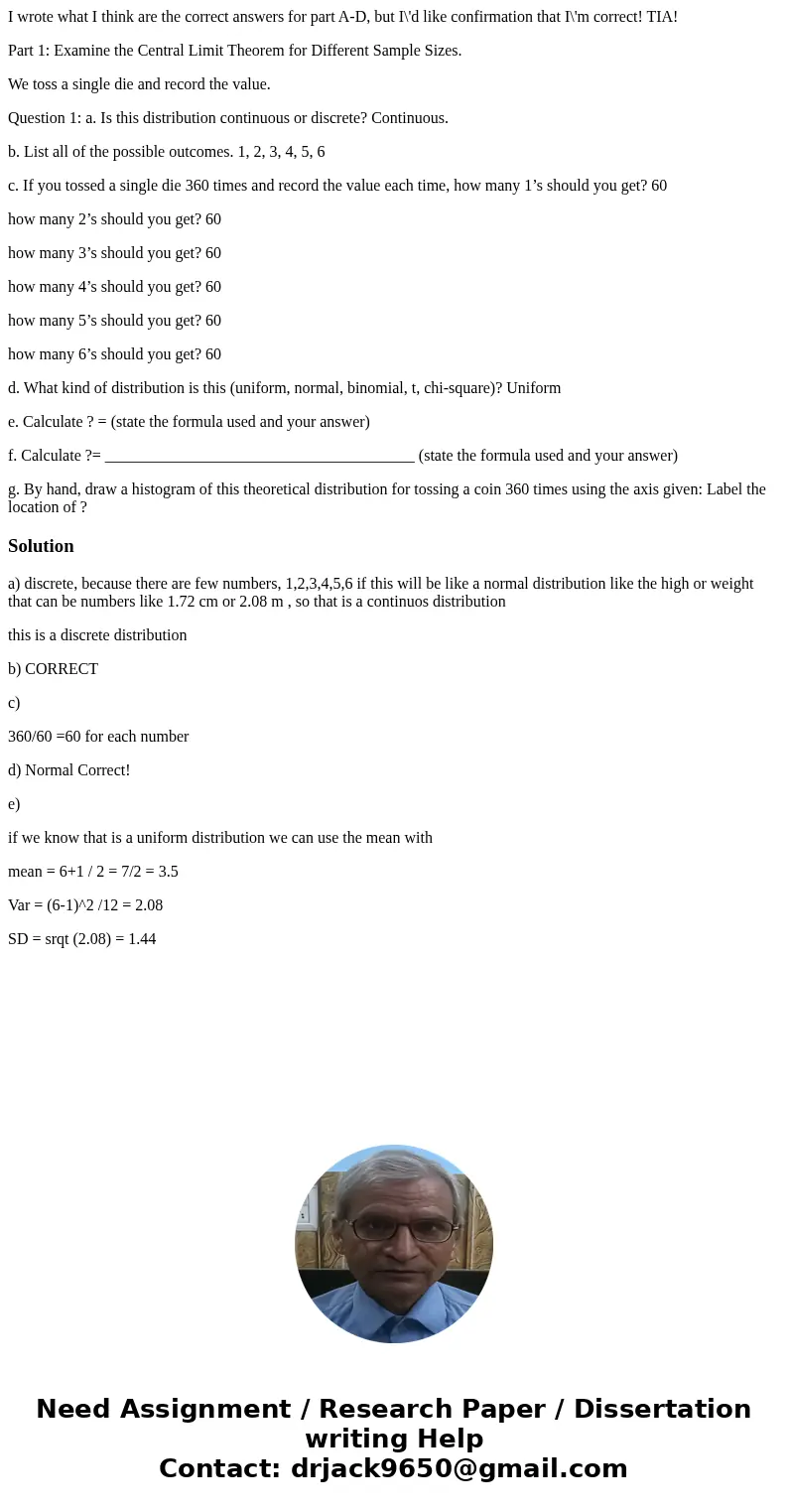I wrote what I think are the correct answers for part AD but
I wrote what I think are the correct answers for part A-D, but I\'d like confirmation that I\'m correct! TIA!
Part 1: Examine the Central Limit Theorem for Different Sample Sizes.
We toss a single die and record the value.
Question 1: a. Is this distribution continuous or discrete? Continuous.
b. List all of the possible outcomes. 1, 2, 3, 4, 5, 6
c. If you tossed a single die 360 times and record the value each time, how many 1’s should you get? 60
how many 2’s should you get? 60
how many 3’s should you get? 60
how many 4’s should you get? 60
how many 5’s should you get? 60
how many 6’s should you get? 60
d. What kind of distribution is this (uniform, normal, binomial, t, chi-square)? Uniform
e. Calculate ? = (state the formula used and your answer)
f. Calculate ?= _______________________________________ (state the formula used and your answer)
g. By hand, draw a histogram of this theoretical distribution for tossing a coin 360 times using the axis given: Label the location of ?
Solution
a) discrete, because there are few numbers, 1,2,3,4,5,6 if this will be like a normal distribution like the high or weight that can be numbers like 1.72 cm or 2.08 m , so that is a continuos distribution
this is a discrete distribution
b) CORRECT
c)
360/60 =60 for each number
d) Normal Correct!
e)
if we know that is a uniform distribution we can use the mean with
mean = 6+1 / 2 = 7/2 = 3.5
Var = (6-1)^2 /12 = 2.08
SD = srqt (2.08) = 1.44

 Homework Sourse
Homework Sourse